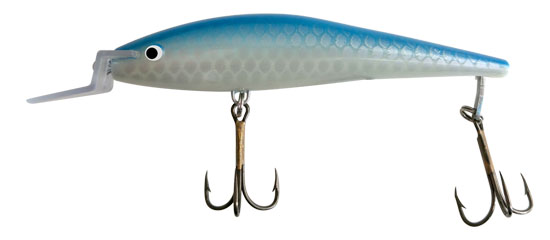A NEW,
REVOLUTIONARY LURE
WITH AUTOMATIC
STRIKEBACK ACTION.
THE STORY
We were fishing at Lake Inari with my wife and the fish seemed to be in a very selective mood and did not bite. Throughout the day, we noticed tens of bites and I was left thinking how many bites there were that we did not notice. The fish still seemed to follow the lure and nibble on it slightly, whether to practice, play or chase other fish away from their territory, I am not sure.
In clear waters, such as those at Lake Inari in the northern part of Finland, it is possible to witness the fish following the lure to the shore. I thought to myself that an instant and strong enough strike-back would be crucial for catching the fish when they are not very active. Usually the strike-back does not happen immediately, because the rods are resting on their holders passively. I was left thinking whether it would be possible to develop a lure that would make an automatic strike-back action, and thus significantly increase the possibility of catching fish.
When we got home, I started researching Patent databases from the beginning of the 20th century, and found some similar inventions. Nevertheless, I did not find exactly what I had in mind. This is where the development of the automatic strike-back lure begun with the working title Sweet Revenge.
HOW THE STRIKER WORKS
The first prototype was based on strike-back mechanics, upon which I built a lure. The result was a lure that was too complex and expensive, and it also did not swim well. So, I changed its name to Torpedo. I did in fact catch some pike and pike perch with the Torpedo, but I figured that the lure was not commercially viable yet.
So back to the drawing board. This time the starting point was a lure that fishes well and this is when I came up with a lure that has a simple strike-back mechanism, now known as the "Striker".
The Striker is a bit different in appearance compared to other lures, as the second hook is attached to the end of the of the mechanisms shaft, instead of being attached closer to the body of the lure. There are two reasons for this: the body provides leverage for the hook to release as the fish nibbles the hook. The tail of the hook on the other hand is supported by the prey's upper jaw so that the force of the strike is on catching the prey instead of tightening the line. This solution proved its effectiveness while testing the lure and we noticed an increase in the amount of fish caught.
The purpose was to develop a general lure for trolling. The Striker also functions well for casting, however it can be triggered if it hits the water hard enough. The body of the prototypes was made with a 3D printer, which is an irreplaceable device for modelling and product development. The type of plastic used in 3D printing is, however, challenging when painting as the paint does not stick. I even tested nail polish for the colors of some prototypes, which turned out to be a useful solution for the trial. The final product was created with a custom plastic injection mold to achieve the strength needed and a good surface for the paint. The Striker does not harm the fish, so it is excellent for catch & release fishing.
